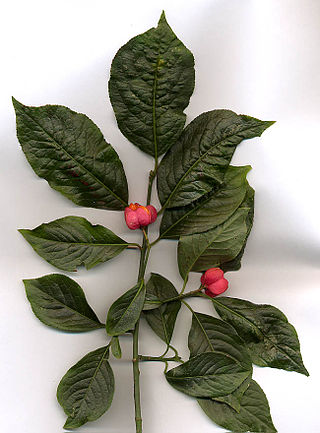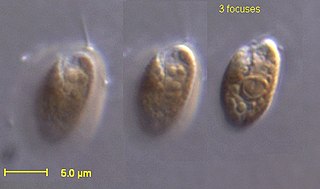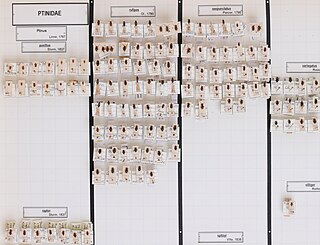
Eugenius was a Western Roman emperor from 392 to 394, unrecognized by the Eastern Roman emperor Theodosius I. While Christian himself, Eugenius capitalized on the discontent in the West caused by Theodosius' religious policies targeting pagans. He renovated the pagan Temple of Venus and Roma and restored the Altar of Victory after continued petitions from the Roman Senate. Eugenius replaced Theodosius' administrators with men loyal to him. This included pagans, reviving the pagan cause. His army fought the army of Theodosius at the Battle of the Frigidus, where he was captured and executed.

Euonymus is a genus of flowering plants in the staff vine family, Celastraceae. Common names vary widely among different species and between different English-speaking countries, but include spindle, burning-bush, strawberry-bush, wahoo, wintercreeper, or simply euonymus. It comprises about 140 species of deciduous and evergreen shrubs, small trees and lianas. They are mostly native to East Asia, extending to the Himalayas, and they are also distributed in Europe, Australasia, North America, and Madagascar. Fifty species are endemic to China.

Petasites frigidus, the Arctic sweet coltsfoot or Arctic butterbur, is a species of flowering plant in the family Asteraceae. It is native to Arctic to cool temperate regions of the Northern Hemisphere in northern Europe, northern Asia and northern North America.

The Battle of the Frigidus, also called the Battle of the Frigid River, was fought on 5 and 6 September 394 between the armies of the Roman emperor Theodosius the Great and the rebel augustus Eugenius, in the eastern border of Roman Italy. Theodosius won the battle and defeated the usurpation of Eugenius and Arbogast, restoring unity to the Roman Empire. The battlefield, in the Claustra Alpium Iuliarum near the Julian Alps through which Theodosius's army had passed, was probably in the Vipava Valley – with the Frigidus River being the modern Vipava – or possibly in the valley of the Isonzo.

Riofreddo is a comune (municipality) in the Metropolitan City of Rome in the Italian region Lazio, located about 45 kilometres (28 mi) northeast of Rome. The name is derived from the Latin "Rivus frigidus," meaning "cold river" or "cold stream."

The Vipava Valley is a valley in the Slovenian Littoral, roughly between the village of Podnanos to the east and the border with Italy to the west. The main towns are Ajdovščina and Vipava.
Euonymus frigidus is a species of plant in the family Celastraceae. It is native to China, the Himalayas, Assam and Myanmar.

The Vipava is a river that flows through western Slovenia and north-eastern Italy. The river is 49 kilometres (30 mi) in length, of which 45 km in Slovenia. After entering Italy it joins the Isonzo/Soča in the Municipality of Savogna d'Isonzo. This is a rare river with a delta source, formed by nine main springs. The Battle of the Frigidus was fought near the river, which was named Frigidus ('cold') by the Romans. It has a pluvial-nival regime in its upper course and a pluvial regime in its lower course.

Agriades orbitulus, the alpine argus, is a butterfly of the family Lycaenidae. It is a high altitude species found in the Alps, the mountains of Norway and Sweden, the Urals, the Himalayas and across central Asia.

Pyrenomonadales is an order of Cryptophyta.

Conus frigidus, common name the frigid cone, is a species of sea snail, a marine gastropod mollusk in the family Conidae, the cone snails and their allies.
Coleophora svenssoni is a moth of the family Coleophoridae. It is found in Lapland, the Alps and the Carpathian Mountains.

Cotoneaster frigidus, the tree cotoneaster, is a species of flowering plant in the genus Cotoneaster of the family Rosaceae, native to the Himalayas. It is a deciduous tree or shrub growing to 10–17 metres (33–56 ft), with smooth, matt, alternate leaves 6–12 cm long and 4–5 cm broad. The creamy-white flowers are followed by masses of small, globose, red fruit (pomes) 5 mm diameter in autumn, persisting into winter or later if not eaten by birds.
Cantharidoscops frigidus, the polar margarite, is a species of sea snail, a marine gastropod mollusk in the family Trochidae, the top snails.

Bombus frigidus, the frigid bumblebee, is a rare species of bumblebee largely found in Canada and parts of the United States.
Aphilanthops is a genus of ant queen-kidnapping wasps in the family Philanthidae. At least four species in Aphilanthops are described.
Pselaptrichus is a genus of ant-loving beetles in the family Staphylinidae. There are more than 30 described species in Pselaptrichus.

Lepyrus is a genus of true weevils in the beetle family Curculionidae. There are more than 70 described species in Lepyrus.
Aphilanthops hispidus is a species of wasp in the family Philanthidae. It is found in Central America and North America.

Pseudeurostus is a genus of spider beetles in the family Ptinidae. There are about seven described species in Pseudeurostus.













